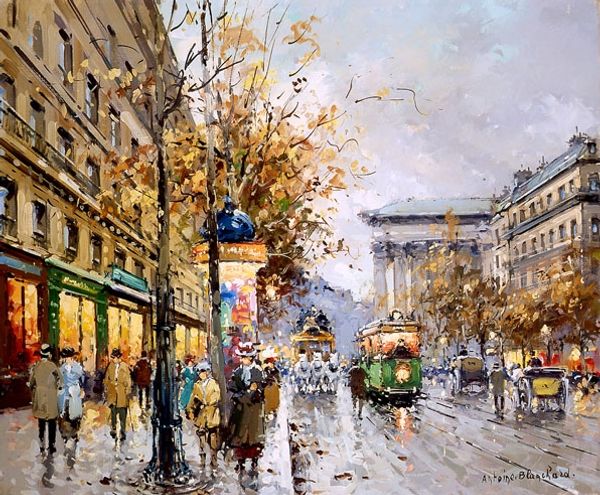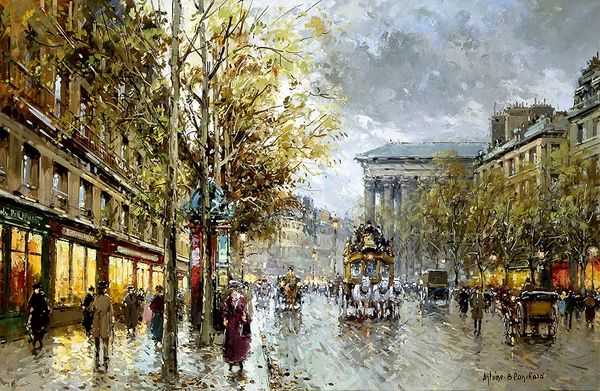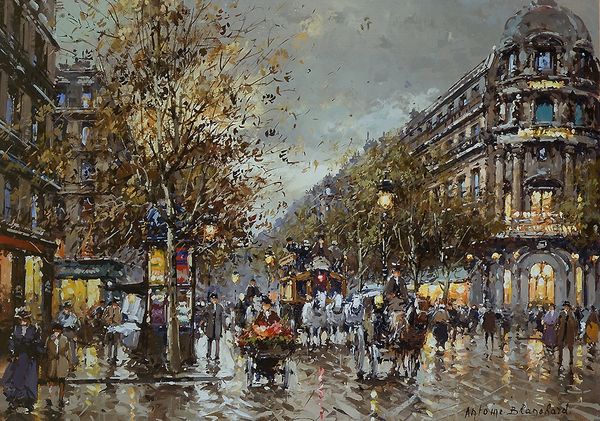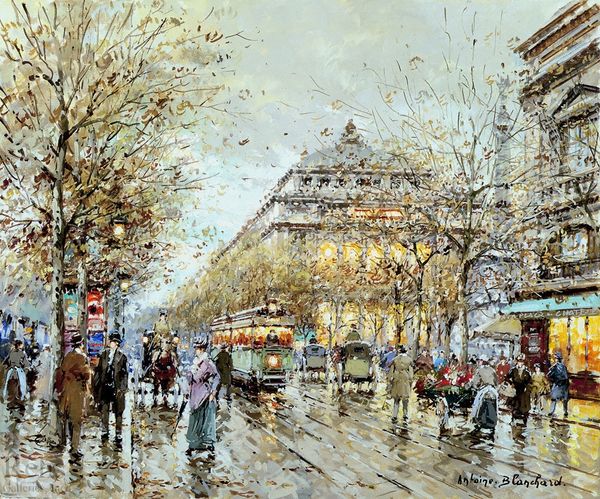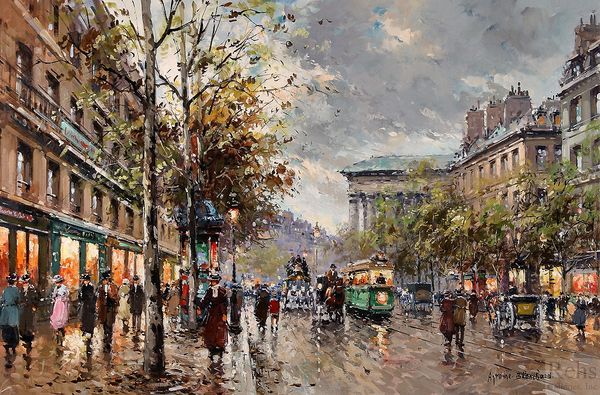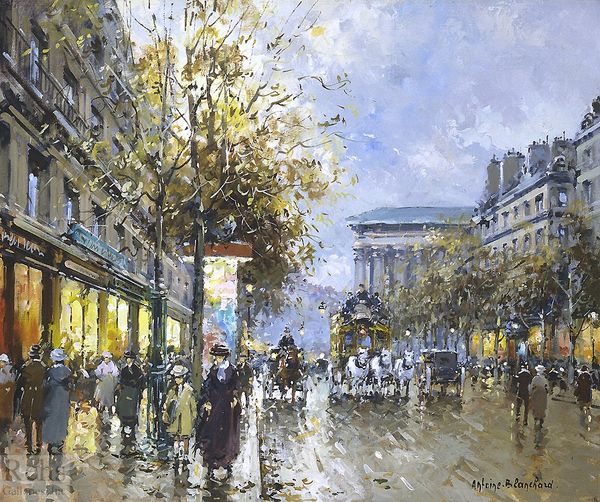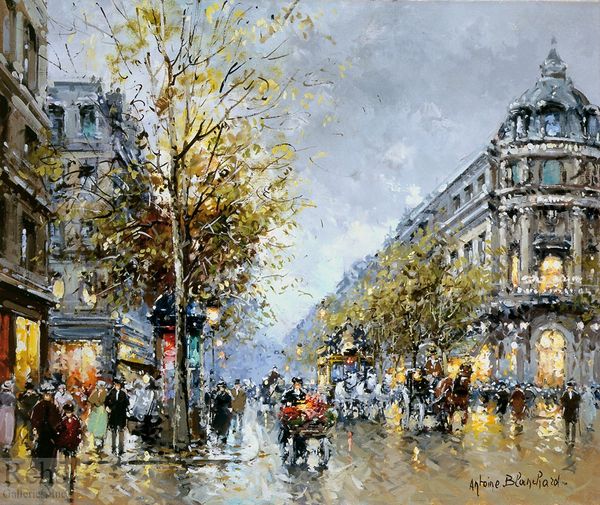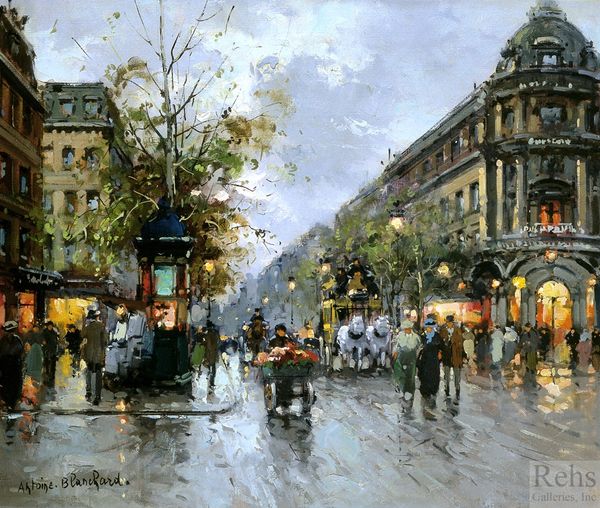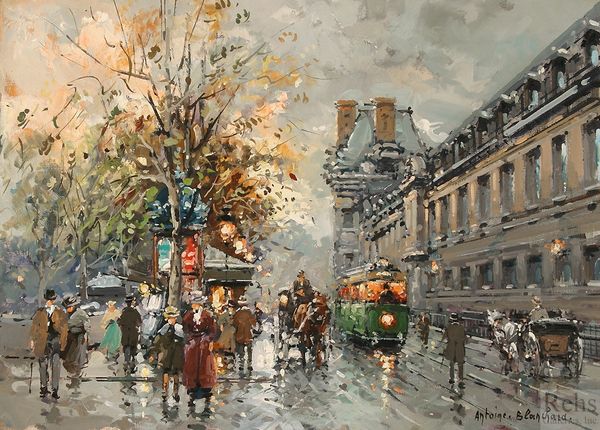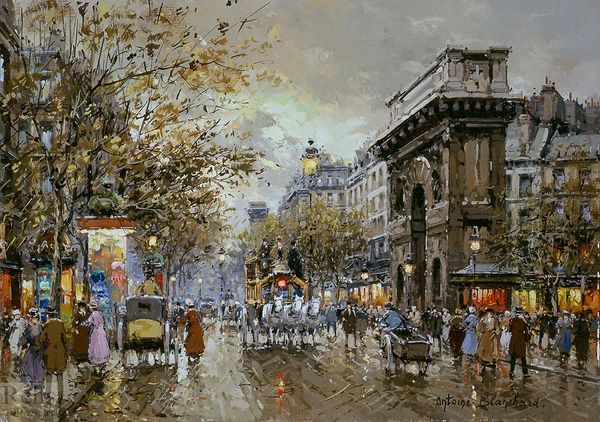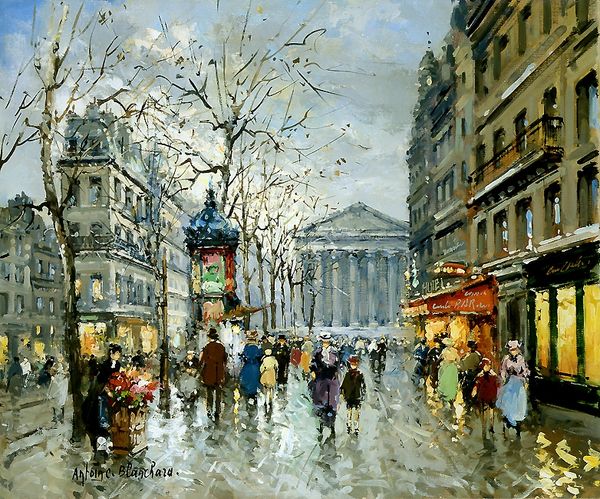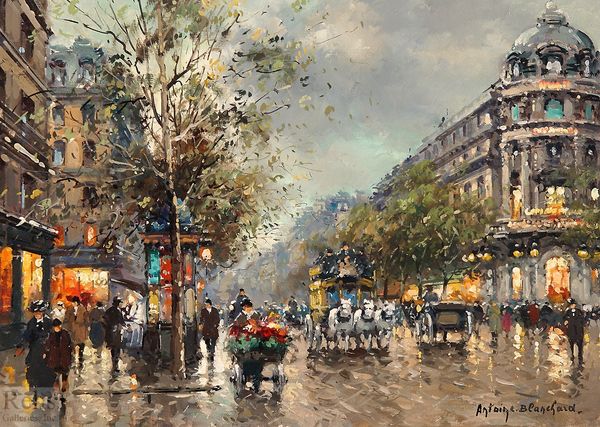
painting, oil-paint
#
impressionist
#
painting
#
impressionism
#
oil-paint
#
oil painting
#
cityscape
#
genre-painting
Copyright: Antoine Blanchard,Fair Use
Editor: So, here we have Antoine Blanchard's "Boulevard de la Madeleine", an oil painting depicting a Parisian street scene, and although the date is unknown, the artist is well known for capturing Paris in the early 20th century style. I'm immediately drawn to the soft, almost hazy atmosphere. What captures your attention? Curator: It evokes a certain nostalgia, doesn't it? I'm intrigued by the symbols of wealth and aspiration here: the horse-drawn carriages, the figures in their fashionable attire, even the architecture implies success and modernity. Yet, there's an almost dreamlike quality to it. Editor: Dreamlike? Could you say more? Curator: The light feels ephemeral and the city appears bustling yet orderly, there's a shared cultural memory present, of Paris as a capital of dreams and sophistication. This scene functions as a signifier - like an elaborate ideogram expressing hope, pleasure, or opportunity. Considering that Blanchard painted during times of significant upheaval in Europe, do you wonder if he romanticizes or memorializes a previous age? Editor: I hadn’t thought about it that way. It makes me wonder if these Parisian scenes, reproduced so often, speak to a desire for simpler, perhaps idealized, times. Do you think there is a psychological aspect for that symbol to resonate so strongly? Curator: Absolutely. Consider how often "Paris" appears in our collective unconsciousness as a marker for beauty or even promise, or as a lost paradise in an anxious time. It raises questions about the relationship between memory, art, and our emotional landscape. Editor: Wow, I’ll definitely look at Blanchard's work differently now. Thank you. Curator: My pleasure. Every time we examine the familiar anew, we enrich our own understanding.
Comments
No comments
Be the first to comment and join the conversation on the ultimate creative platform.
